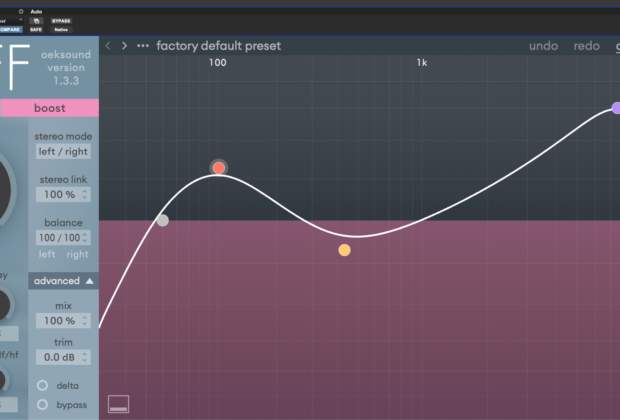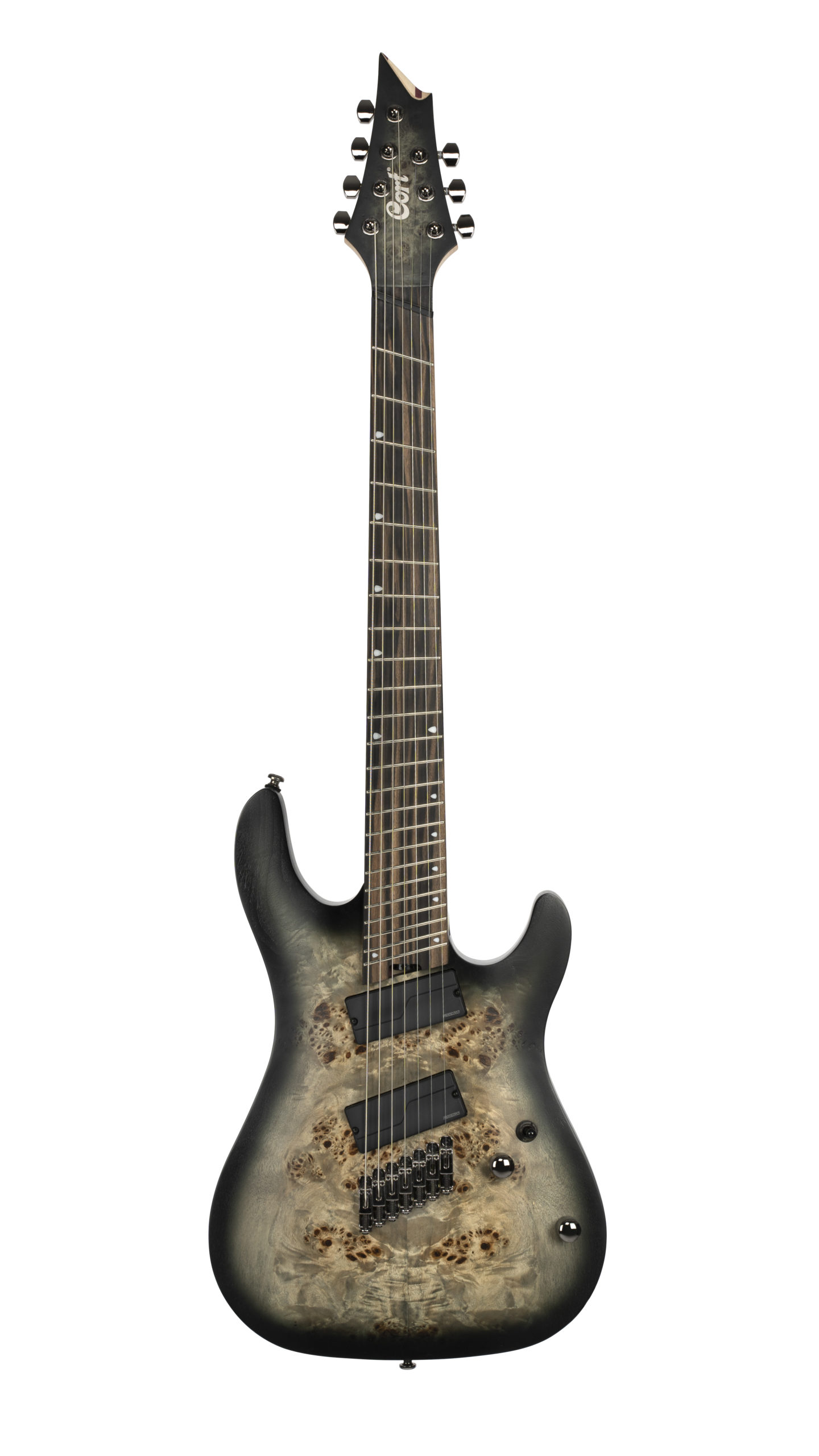The spiff plug-in is an adaptive transient processor that detects the sudden and momentary jumps in audio level while leaving the rest of the audio program untouched. Once detected, you can have spiff either attenuate the transient “spikes” or increase their level.
What separates spiff from other transient manipulators is the precision with which the process can be exactly “tuned.” In Cut mode, spiff works well to remove sharp clicks, mouth noises, and digital clicks. Boost mode will rescue any kick drum with excessive tonal and boomy sound by emphasizing just the frequencies contained in the attack or front portion of the drum's sound.
The resizable GUI shows a 20Hz to 20kHz spectrum with four adjustable frequency centers or nodes available for transient modification. To adjust the weight of the spiff process, each of these nodes uses familiar parametric equalizer controls with a choice of filters—bell, shelving, or various high or low pass shapes.
As a quirky effect in boost mode and to increase intelligibility, I tried spiff on a staccato rap vocal to add an aggressive attack to each word in a very busy and wordy rhythm. Determining which frequencies to emphasize or reduce is easy using the Delta button; it solos the affect on the transients of the entire plug-in.
Other controls are: Sharpness controls the bandwidth of the process, Decay sets the time for the level to return back to its initial level, and Decay LF/HF sets a balance of decay times between the high and low frequencies.
Between the excellent manual, helpful popup Tooltips, and dozens of excellent factory presets, you will have no problem using spiff to its full potential. It can be a lifesaver for serious audio problems or as a customizable effect. I can highly recommend this modern musical tool designed in Finland!
Oeksound spiff sells for $169 MSRP as download.














